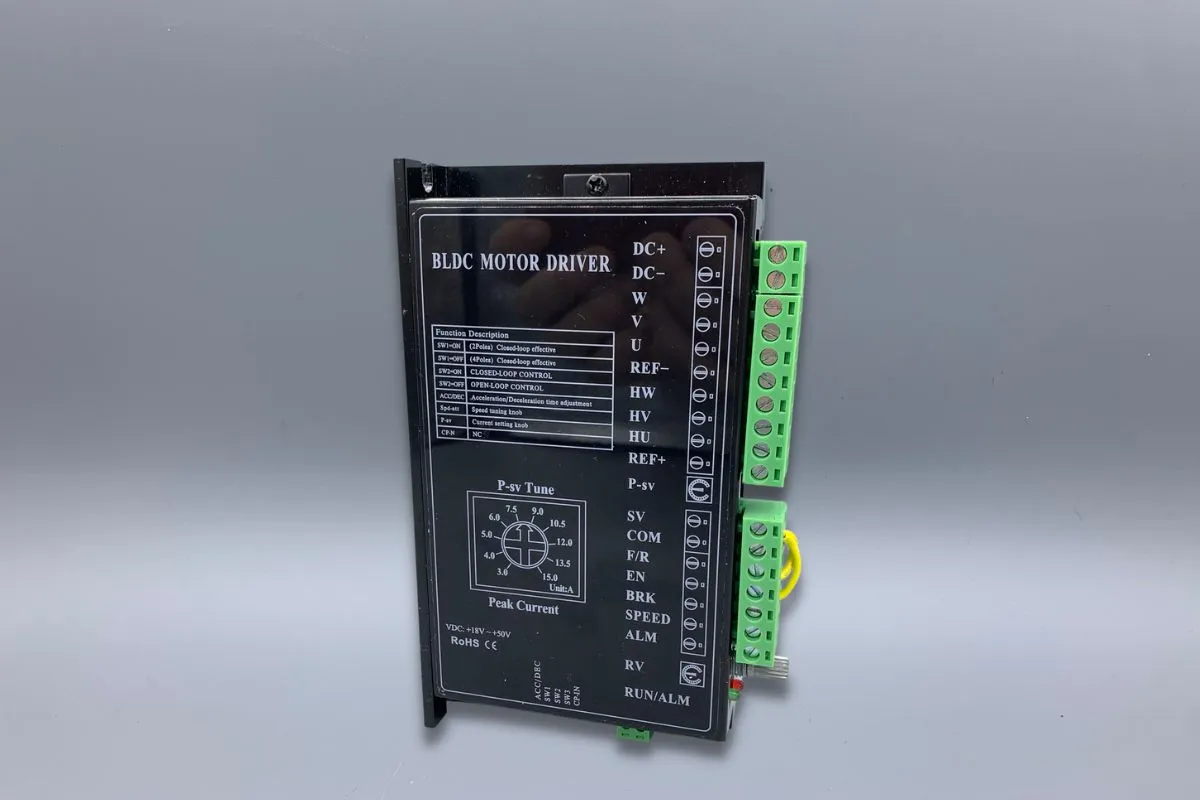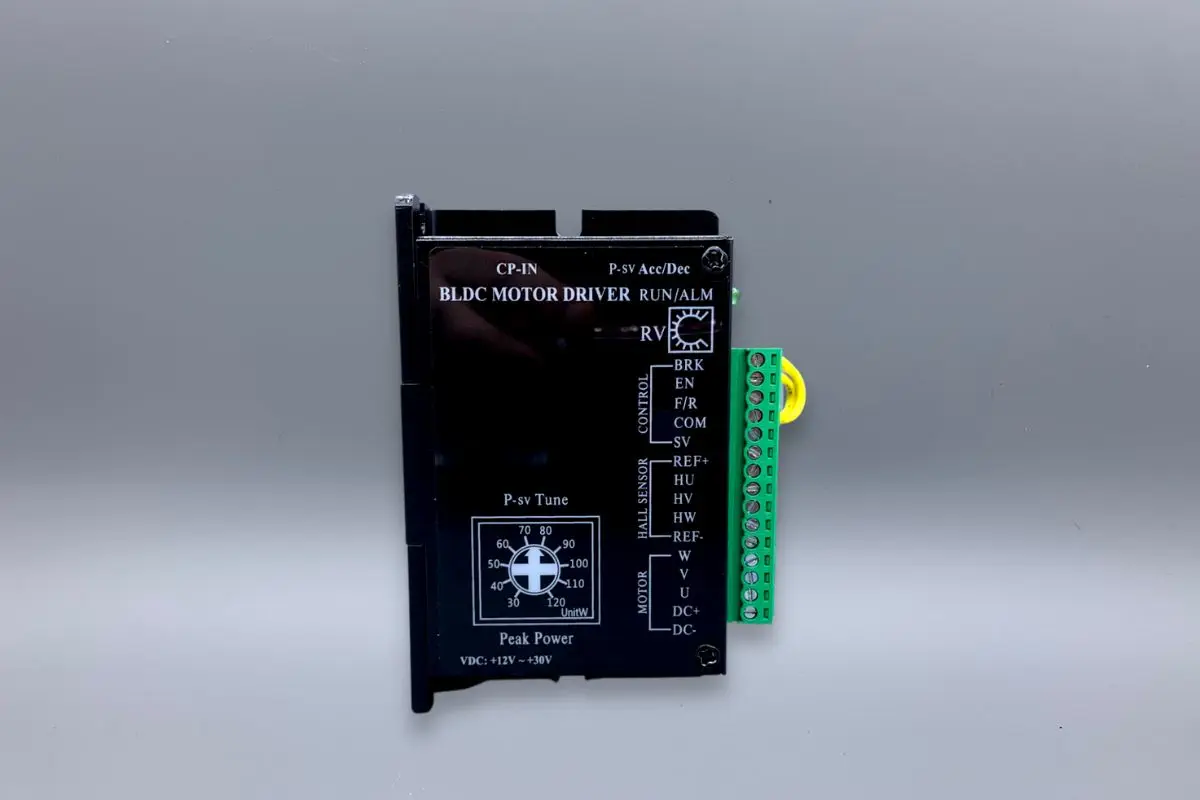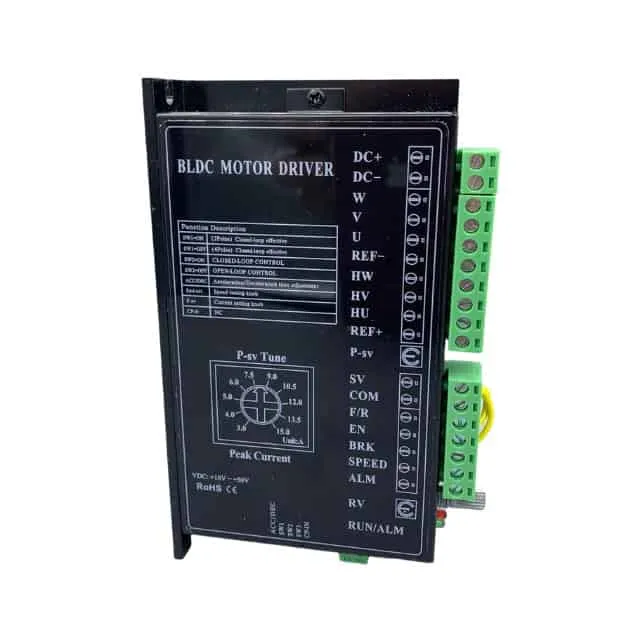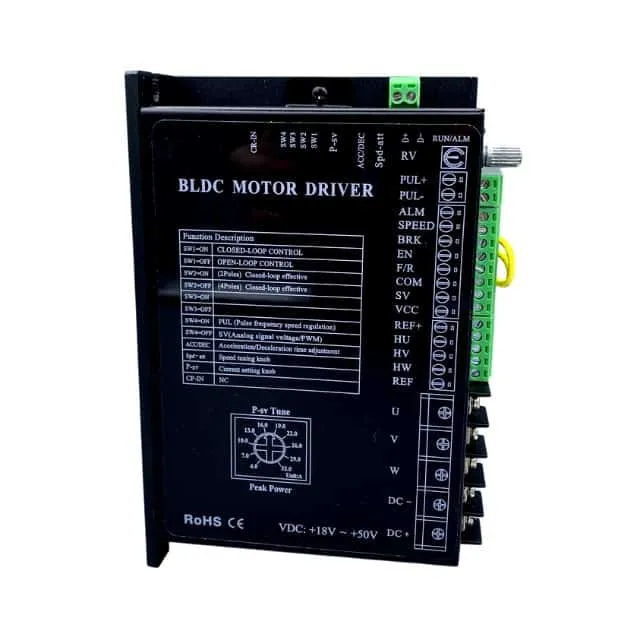Brushless DC Motor Controllers
ISL Products offers a key component to an often-nuanced operation – brushless dc motor control. Our bldc motor controllers offer plug-and-play convenience for simple closed-loop motor control, as well compatibility with separate PWM controllers and Arduino micro-controllers. The controllers ISL Products offers come in several configurations, so they can be sized according to a customer’s power requirements.
Motor control can be very nuanced, with each motor application requirement differing from the next. ISL Products has taken a general approach to motor controllers. Our controllers are designed to be used with a wide range of 3-phase brushless dc motors. When selecting the appropriate controller, its important to understand the motors‘ input power, current draw and voltage. These three parameters will help us to provide the most appropriate controller solution. Our goal is to provide our customers with a full suite motor control solution!
Shop Popular Models
BL-DRV Series BLDC Motor Controllers
Our motor controller offerings are staggered, each cost-optimized design is intended to support motors at different power levels and input voltages. All of our controllers are designed with the same functions to operate BLDC motors with precision. Speed control is available with a built-in RV potentiometer for closed loop circumstances, but our controllers are compatible with other micro-controllers and external pulse-width modulation (PWM) in open loop systems to achieve speed, position control. In addition to working with micro-controllers, we have implemented provisions for external components such as potentiometers, for motor speed adjustments.
Our controllers are designed with Digital Signal Processing (DSP) technology, which allows for high switching frequency, low noise, and high precision. Position detection relies on hall-effect signals from the BLDC motor. They are designed in compact packaging, with over-load protection circuitry and aluminum heat-sinks to reduce the chances of damaging your motor/controller.
Fundamentals of Brushless DC Motor Controllers
A controller can start/stop a motor, change rotation direction and regulate a motors rotational speed to keep it operating at maximum efficiency or at a certain torque output. Brushless motors cannot operate without a driver or controller. Unlike the mechanical system found in brushed DC motors, brushless DC motors rely on electronic commutation to drive and regulate the motors operation. BLDC motors are typically constructed with three hall effect sensors that detect rotor position and relays positioning information to the controller. Electronic commutation is then achieved by the controller enabling the switching of phase currents to motor (stator) windings relative to rotor position. This form of commutation is one of the advantages of brushless motors, allowing them to operate more efficiently and generate lower levels of EMI compared to brushed motors. A quality controller is important for smooth operation and output power.
Three-Phase Power System
Most brushless motors are considered to be three-phase brushless DC motors. This simply means they are configured with a three-phase power systems to achieve synchronous operation. The three phase windings in the stator are wound 120° apart from one another. A motor speed controller will know when to excite each phase winding according to the rotors position. Depending on the manufacturer or design of a particular brushless dc motor controller, the method in which the controller interprets the rotors position may differ. It’s important to understand the type of motor your looking to control. An ISL Products brushless motor controller will rely on Hall-effect sensors for this feedback.
If you are searching for a motor drivers to control stepper motors, please contact us for assistance. We can provide stepper motor drivers for applications as well.
We typically have our controllers and drivers readily available to help our customers with a quicker time to market.
Popular Models Available:
MOT-BL-DRV-120 – This model is suited for an input voltage range of 12VDC – 30VDC. Max power/current rating is 120W/8A.
MOT-BL-DRV-300 – This model is suited for an input voltage range of 18VDC – 50VDC. Max power/current rating is 300W/15A.
MOT-BL-DRV-750 – This model is suited for an input voltage range of 12VDC – 50VDC. Max power/current rating is 750W/25A.
Brushless DC Motor Controllers FAQ's
-
A BLDC motor controller is responsible for controlling the speed, torque, and direction of the motor, as well as starting, stopping, and reversing its rotation. A BLDC motor controller detects the position of the rotor through the use of sensors, such as a Hall-effect sensors, or through a sensorless method. The sensors accurately measure the position of the rotor and transmit the data. The controller receives information and enables the transistors to switch the current, energizing the required winding of the stator at the appropriate time.
To understand the working principles of the controller further, refer to the Brushless DC Motor Basics design note which further illustrates the construction of a brushless motor.







